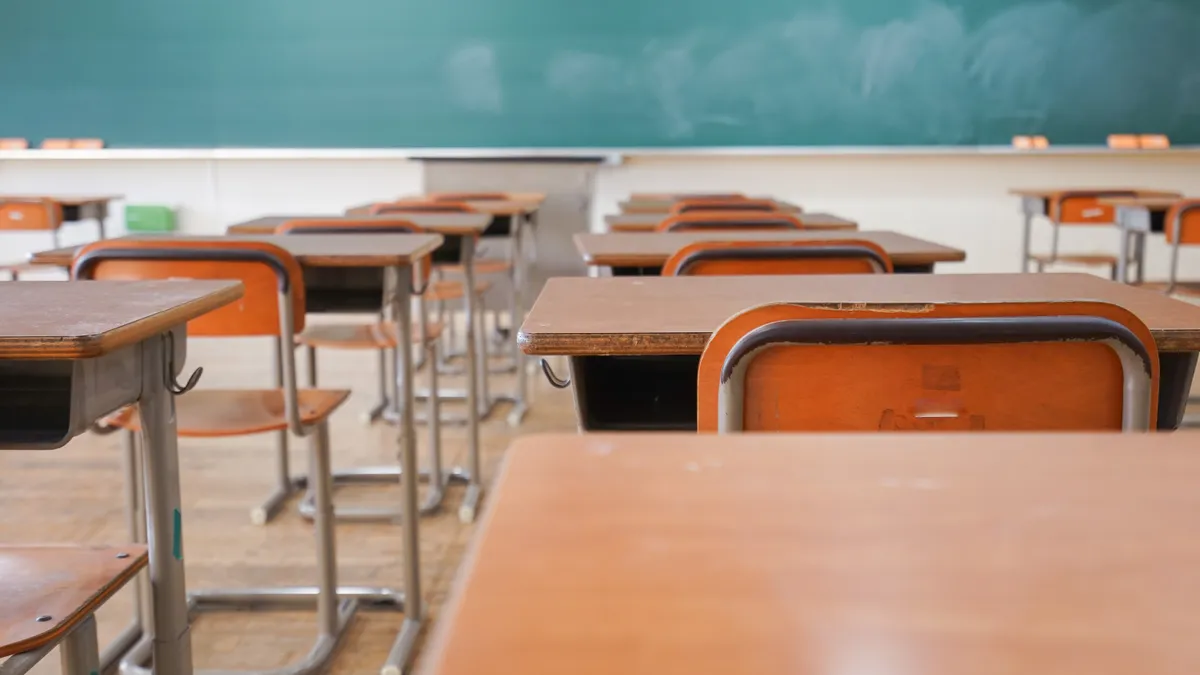Dive Brief:
- Student chronic absenteeism dipped slightly to 28% nationally for the 2022-23 school year from a high of 30% in 2021-22, illustrating the lingering impacts from pandemic-related school closures, according to an analysis released by Attendance Works on Thursday.
- Chronic absenteeism declined in most states in 2022-23, but some states such as Oklahoma and Oregon and the District of Columbia saw increases compared to the previous school year.
- While the data is promising, several challenges remain for schools struggling with attendance, including disruptions to learning for students who are not chronically absent and adverse impacts on student social interactions, Attendance Works said.
Dive Insight:
Attendance Works defines chronic absenteeism as when a student misses 10% or more of school days over a school year — or about 18 days — due to absence for any reason, including those that are excused, unexcused and suspensions.
The 28% chronic absenteeism rate for the 2022-23 school year — when calculated by the average-sized school — means there were at least 88 chronically absent students in each elementary school, 113 in each middle school, and 139 students in each high school.
By comparison, the chronic absenteeism rate prior to COVID-19 in 2018-19 was 16.2%.
Chronic absenteeism affected every student demographic but was much higher for Native American, Pacific Islander, Black and Hispanic students, students with disabilities and English learners. Elementary schools and schools serving high populations of students receiving free or reduced-price lunch had higher rates of extreme chronic absenteeism — defined as having 30% or more students chronically absent.
Since June, Attendance Works, along with the American Enterprise Institute and Education Trust, began urging states and school districts to put policies in place that would lead to a 50% reduction in chronic absenteeism over the next five years.
Despite slow progress in overall increases to school attendance, there are examples of notable improvements in student engagement and attendance in several states, including Colorado, Connecticut, Virginia, Rhode Island and New Mexico, that were supported by comprehensive absenteeism prevention efforts coupled with data analysis, Attendance Works said.
The organization promotes several strategies to improve attendance, including:
- Prioritizing family engagement.
- Encouraging student connections.
- Ensuring student health, wellness and safety.
- Offering relevant and engaging learning.
- Supporting access to learning.














